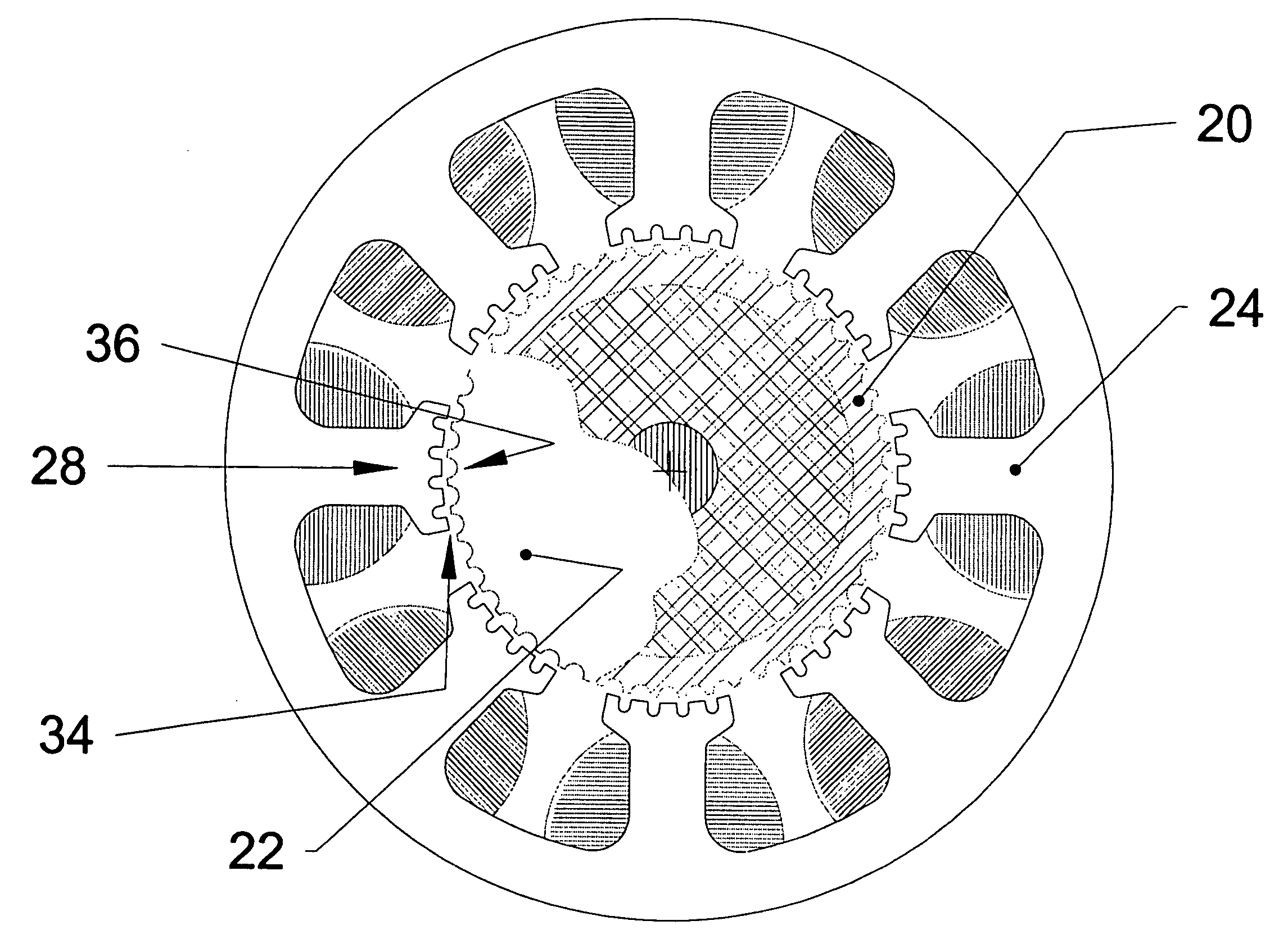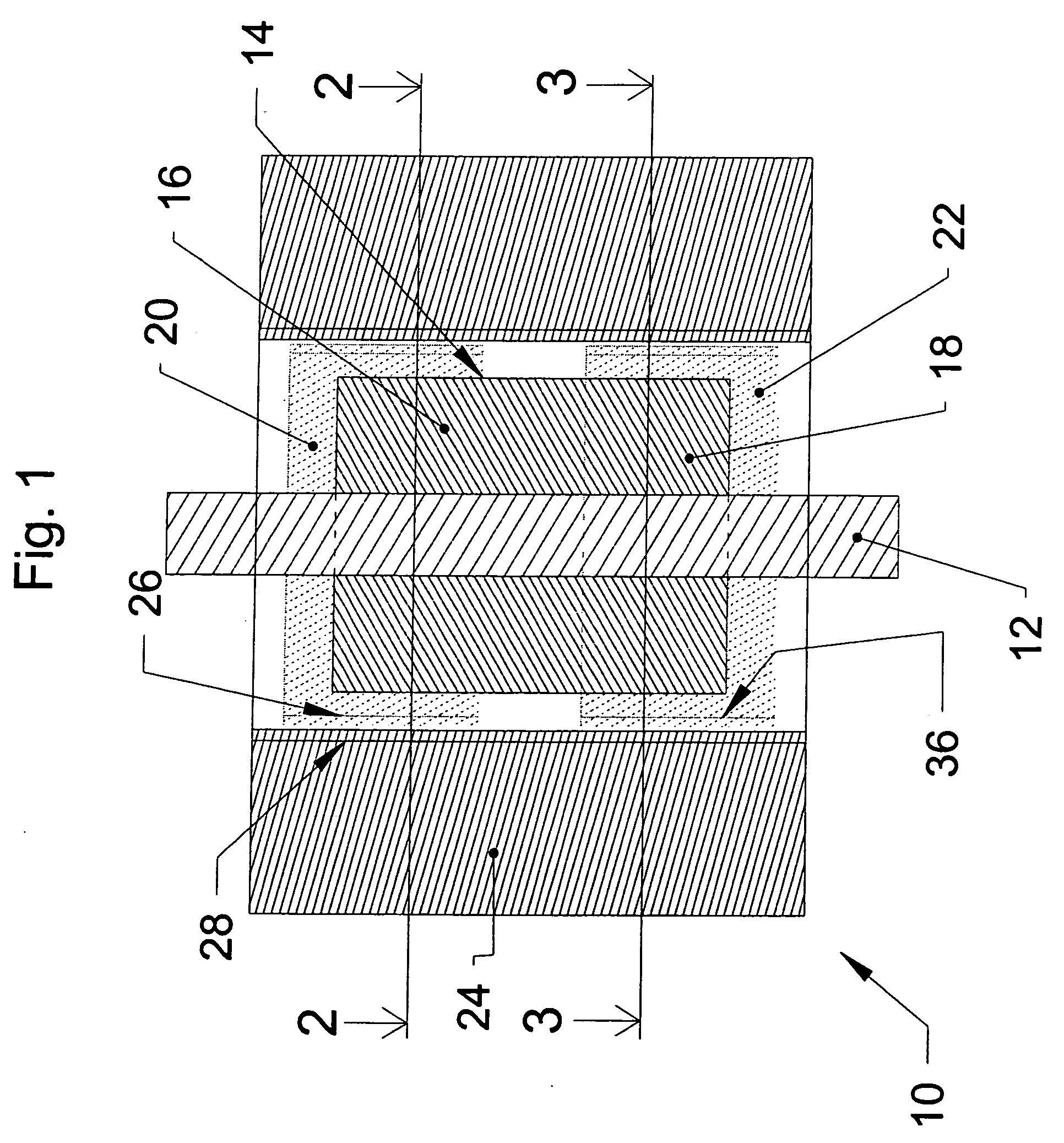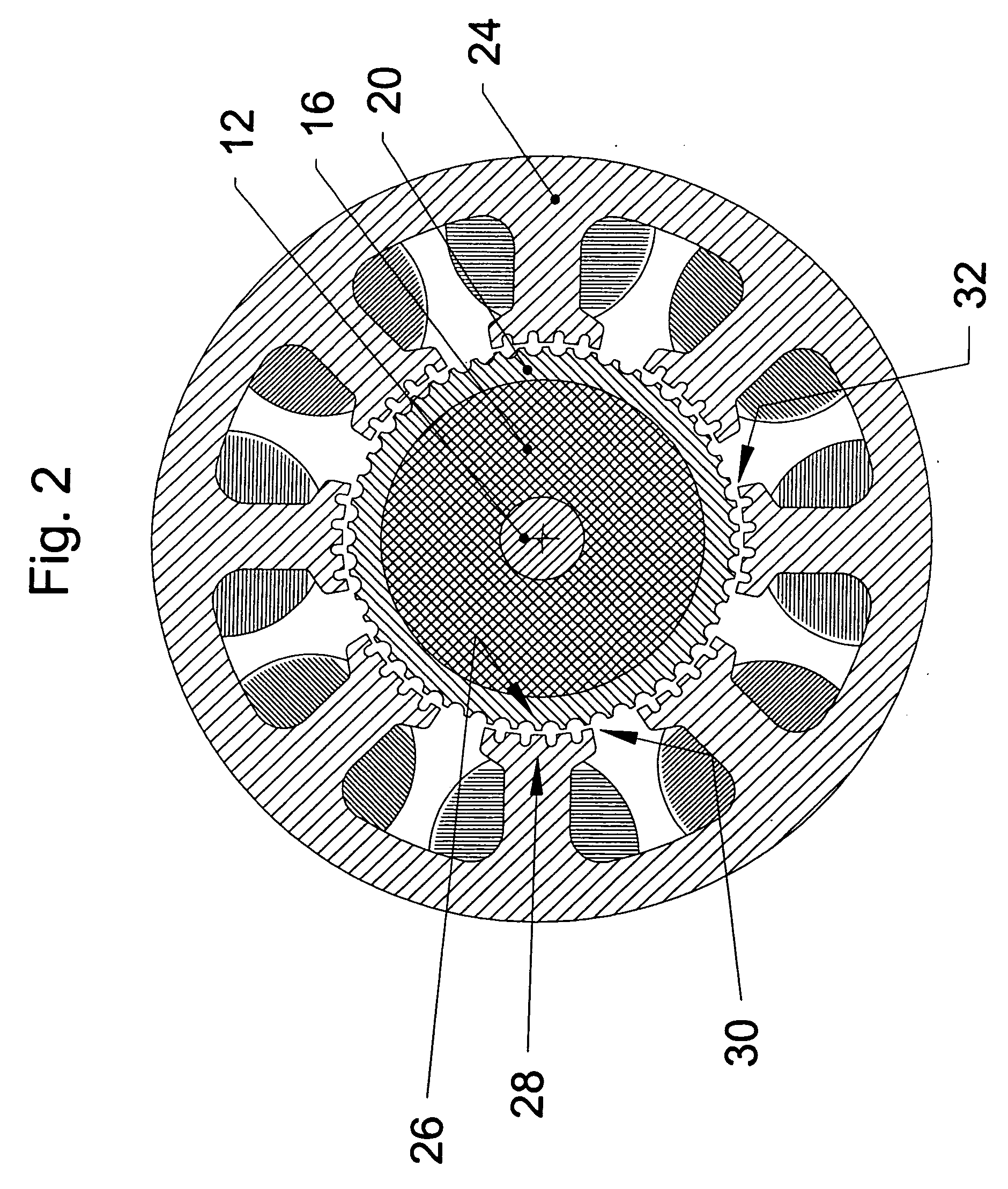Integrated resolver for high pole count motors
a resolution device and high-poly count technology, applied in the field of motors, can solve the problems of limiting the use of the motor to the smaller temperature range of the attached encoder, and affecting the quality of the encoder
- Summary
- Abstract
- Description
- Claims
- Application Information
AI Technical Summary
Problems solved by technology
Method used
Image
Examples
Embodiment Construction
[0016] An aspect of the present invention provides an integrated motor-position sensor. The motor has a rotor assembly including a cylindrical portion having an axis, the cylindrical portion has a plurality of peripherally-spaced radially-projecting rotor teeth. The motor also has a stator assembly coaxial with the rotor assembly and having a plurality of radially projecting stator poles, the stator poles each have a plurality of stator teeth projecting radially to a circle coaxial with the rotor assembly, and coils for electrically energizing the stator poles. A plurality of sensing coils are positioned to intercept the magnetic flux between a plurality of the stator poles and a plurality of rotor teeth.
[0017] Another aspect of the invention provides an integrated motor-position sensor including a motor comprising a rotor assembly including a cylindrical portion having an axis, the cylindrical portion having a plurality of peripherally-spaced radially-projecting rotor teeth. The m...
PUM
 Login to View More
Login to View More Abstract
Description
Claims
Application Information
 Login to View More
Login to View More - R&D
- Intellectual Property
- Life Sciences
- Materials
- Tech Scout
- Unparalleled Data Quality
- Higher Quality Content
- 60% Fewer Hallucinations
Browse by: Latest US Patents, China's latest patents, Technical Efficacy Thesaurus, Application Domain, Technology Topic, Popular Technical Reports.
© 2025 PatSnap. All rights reserved.Legal|Privacy policy|Modern Slavery Act Transparency Statement|Sitemap|About US| Contact US: help@patsnap.com



